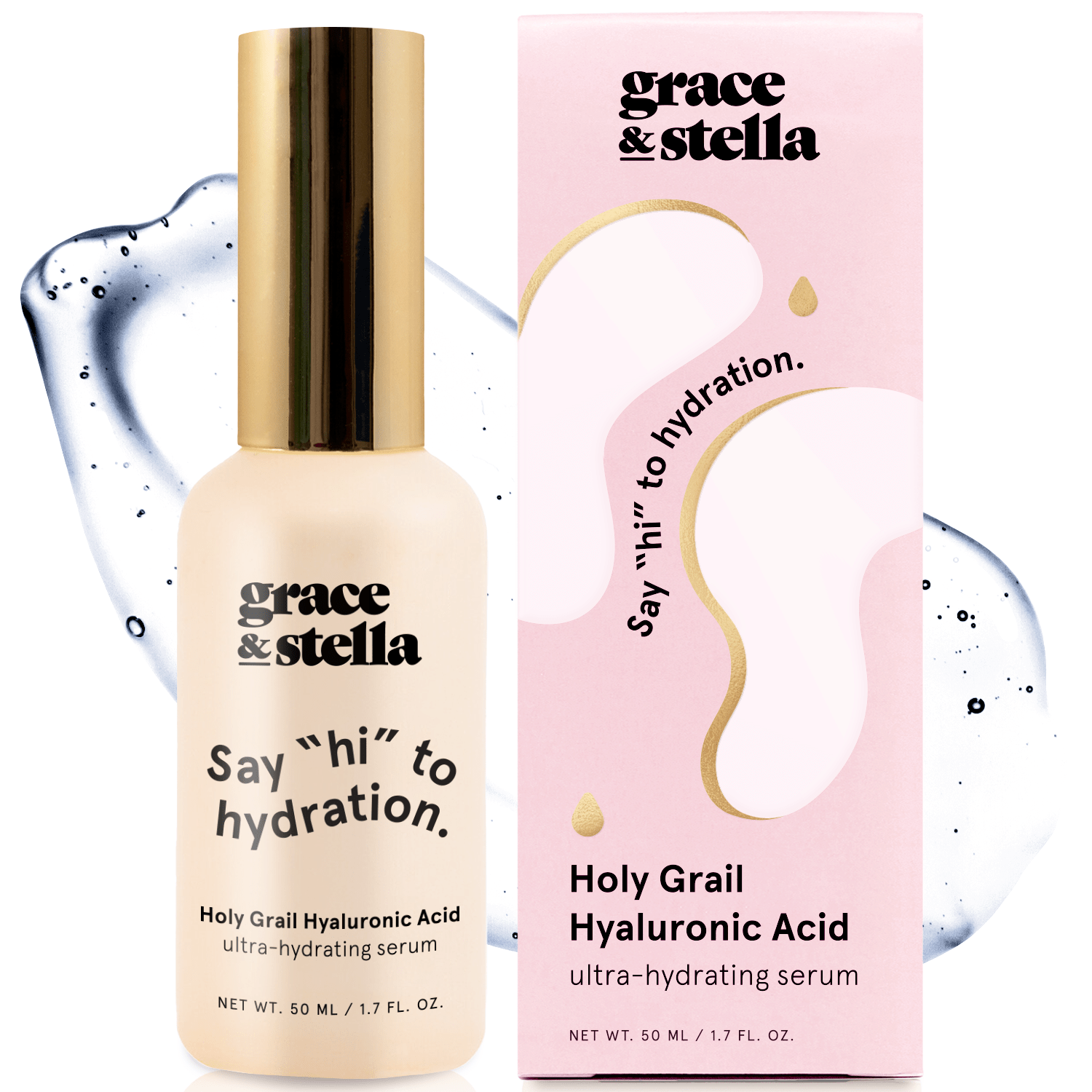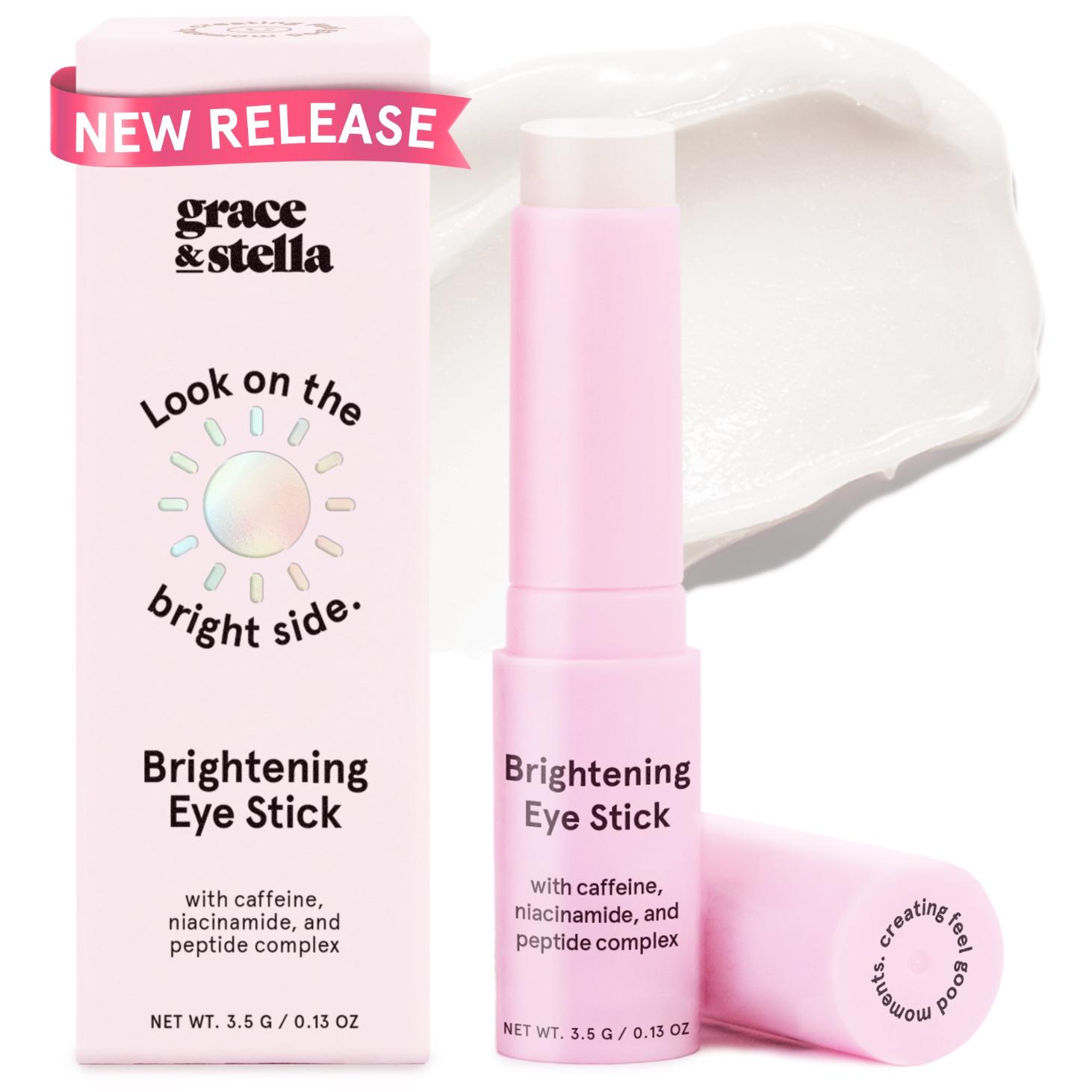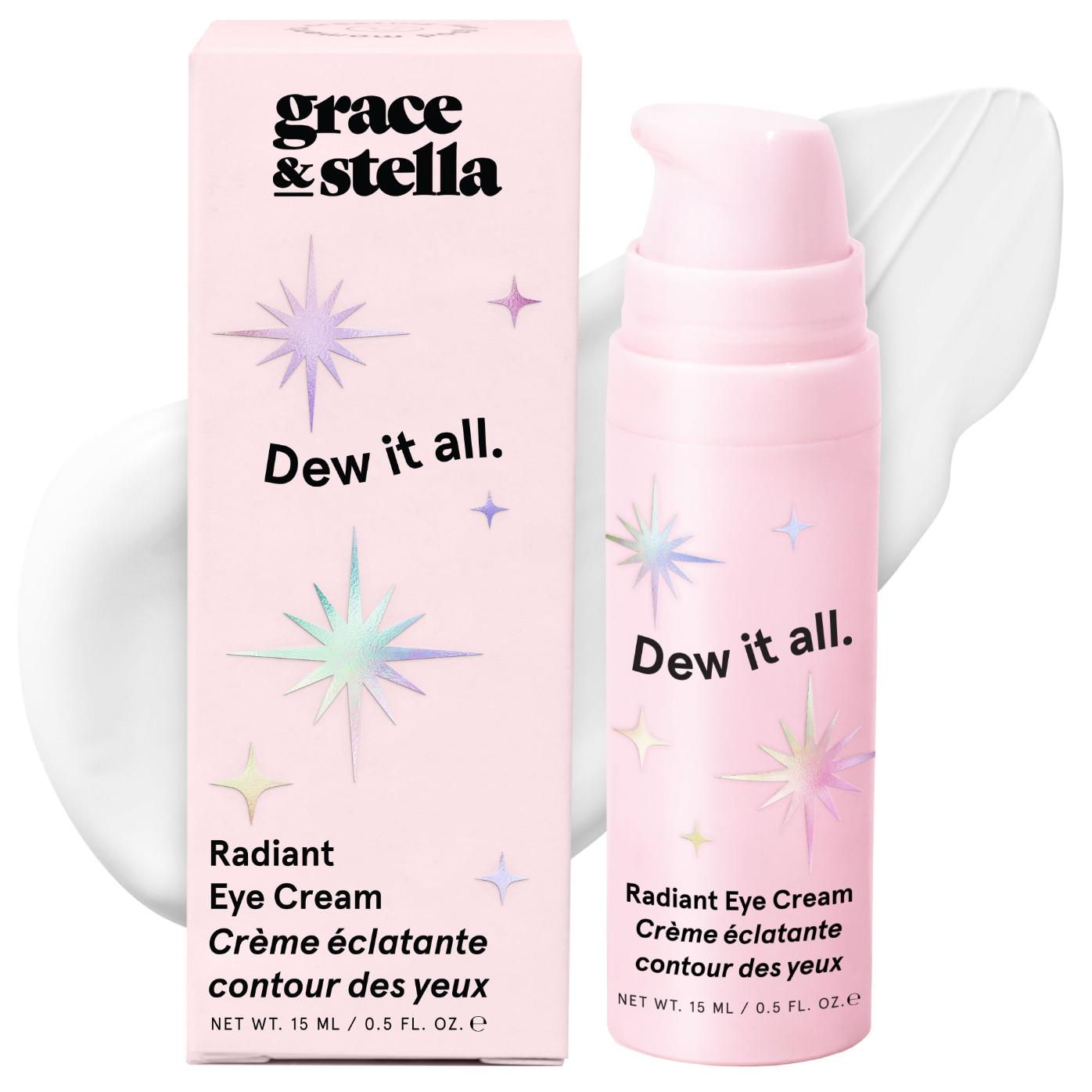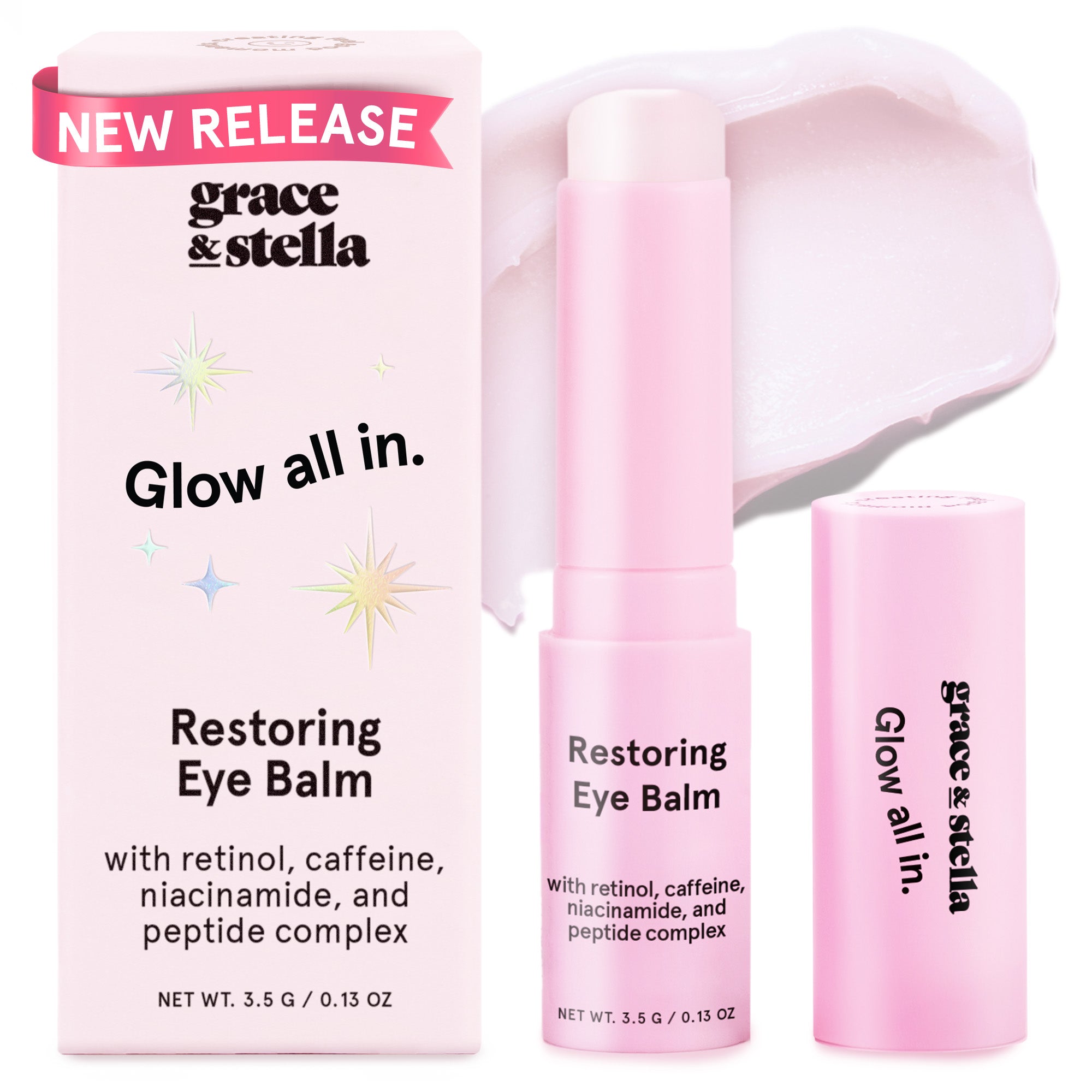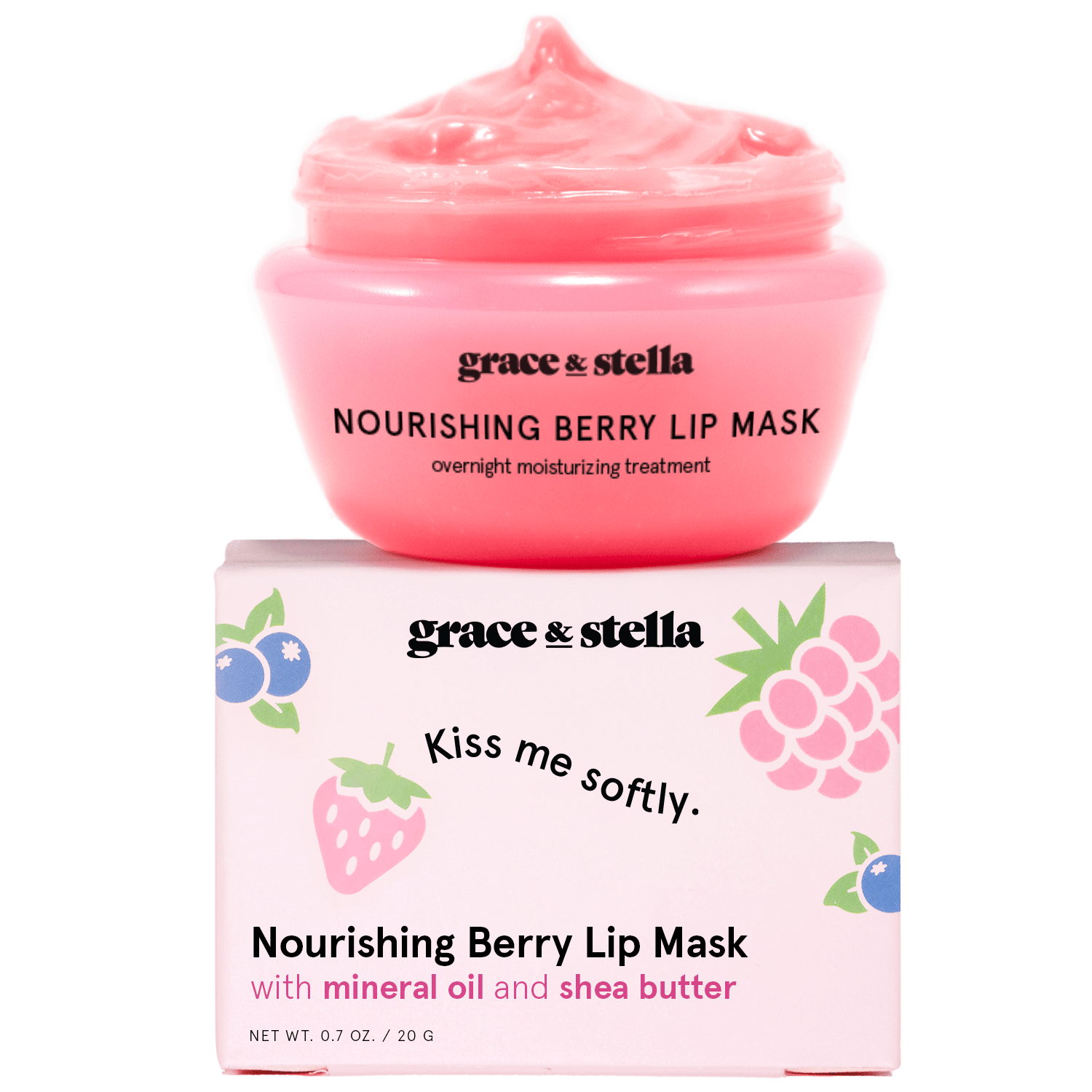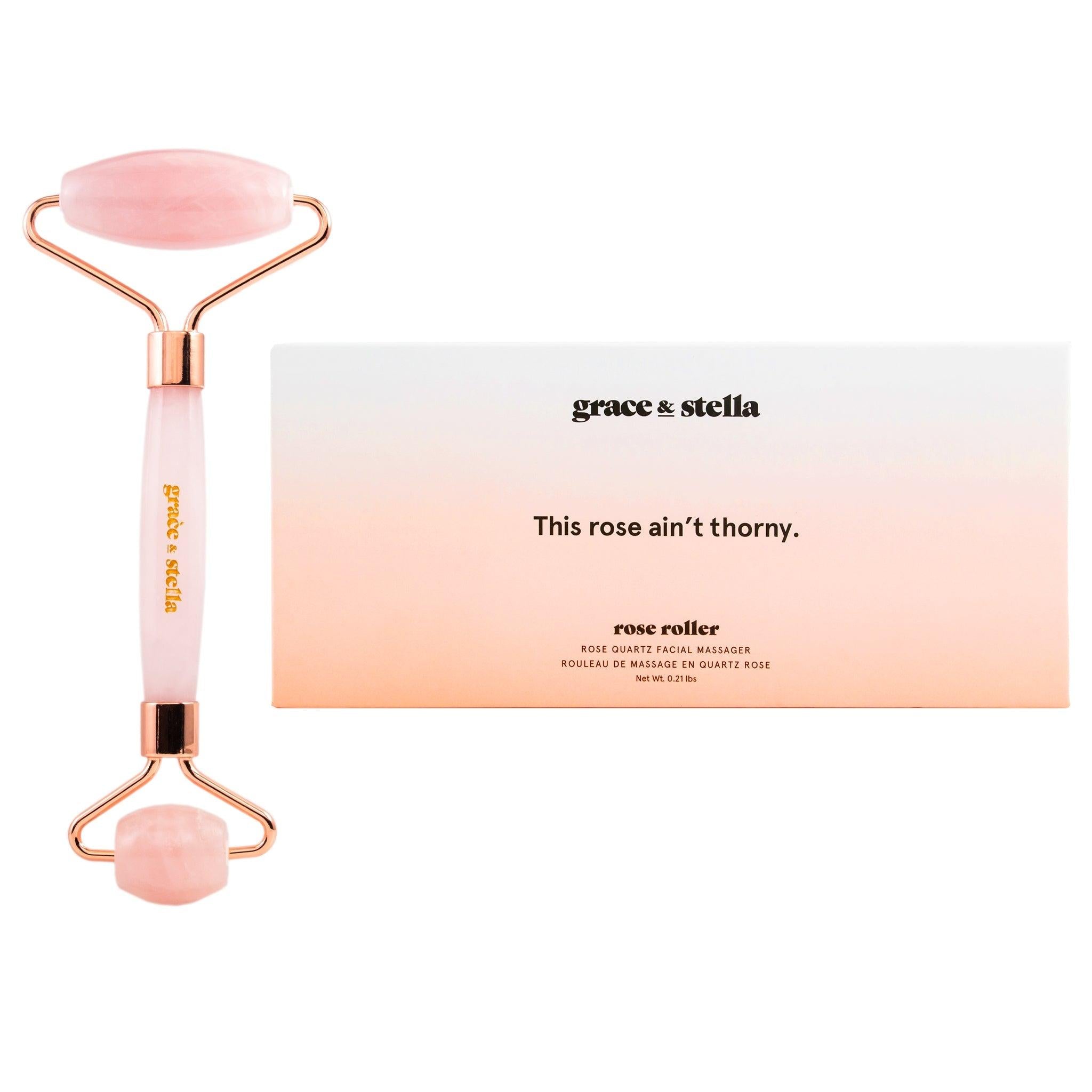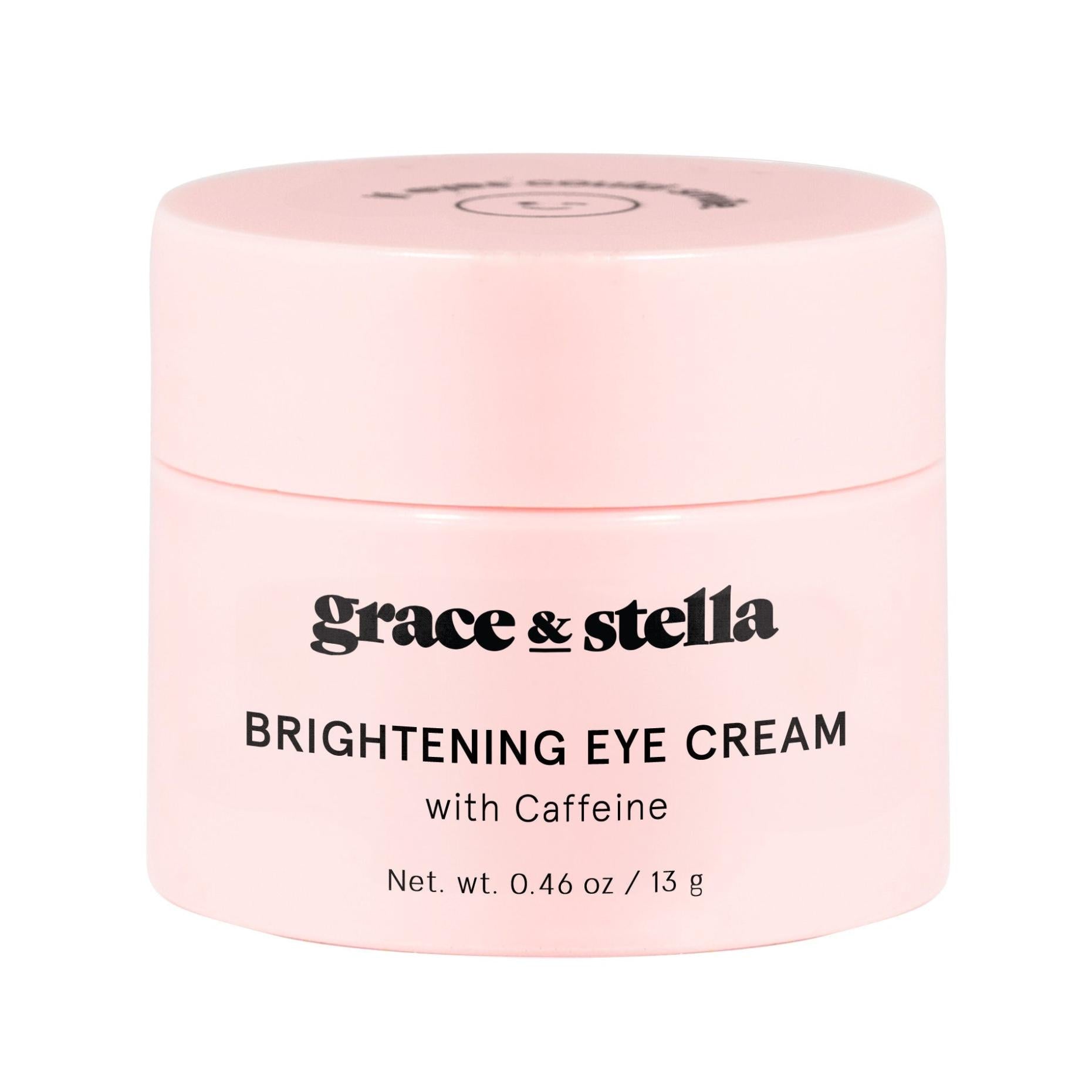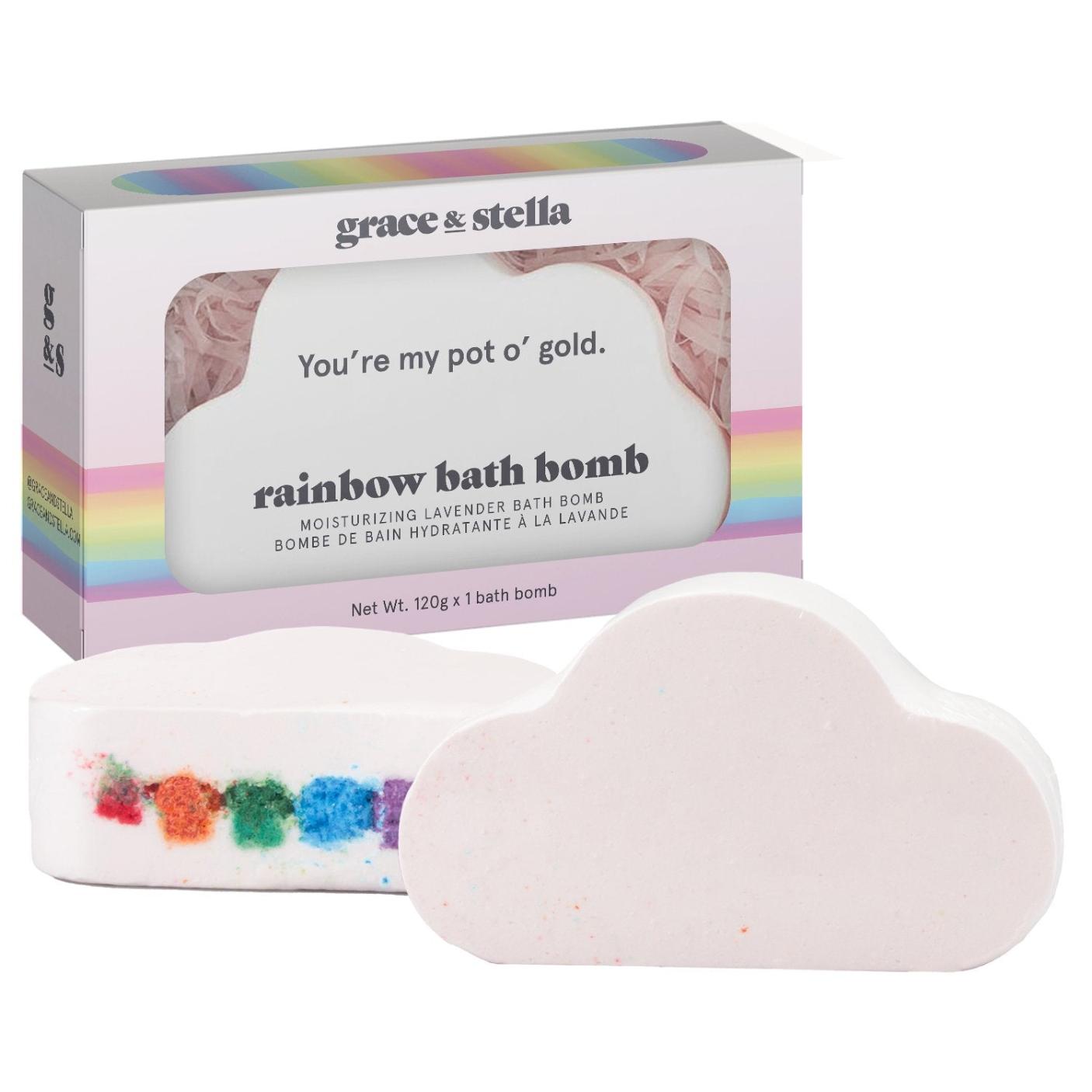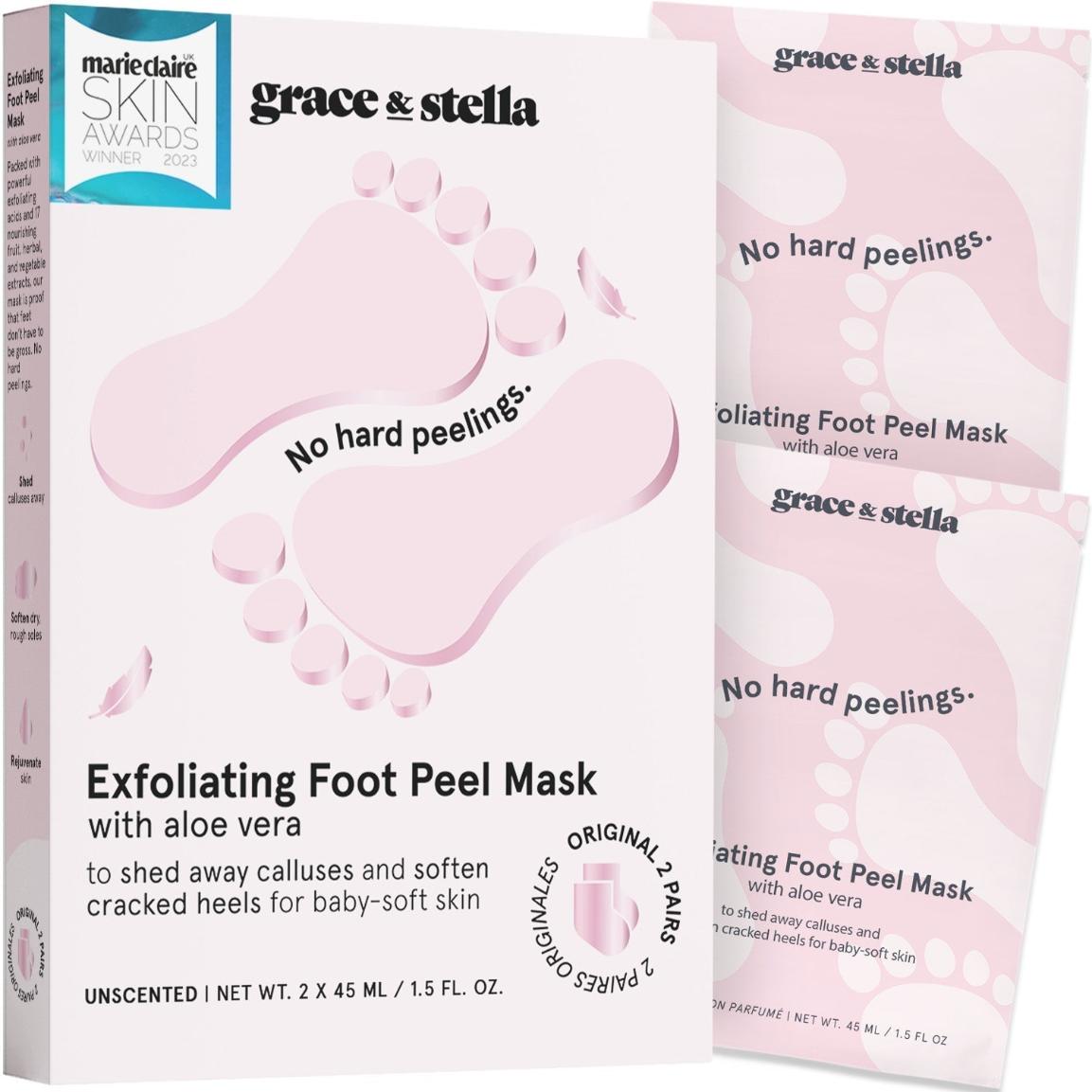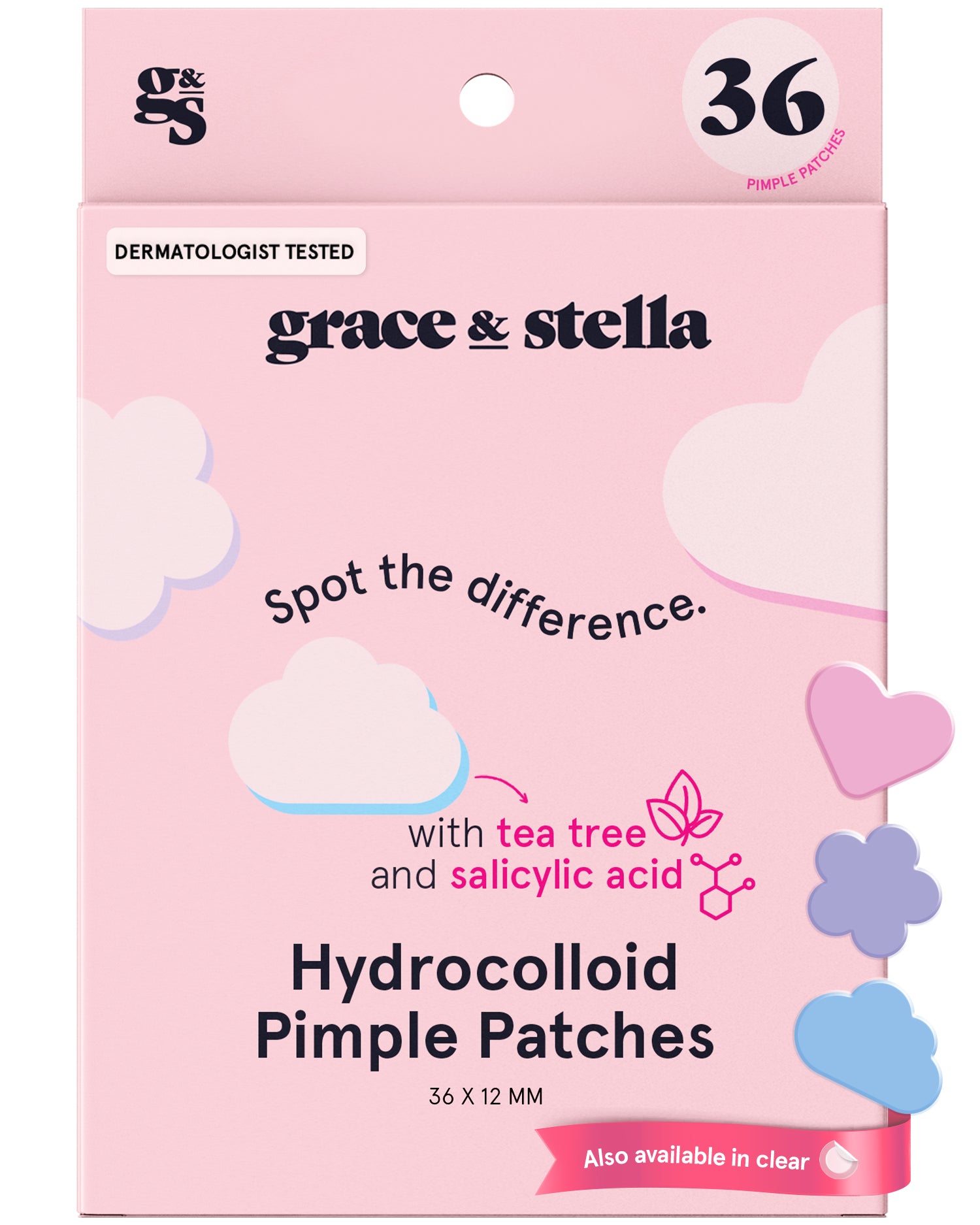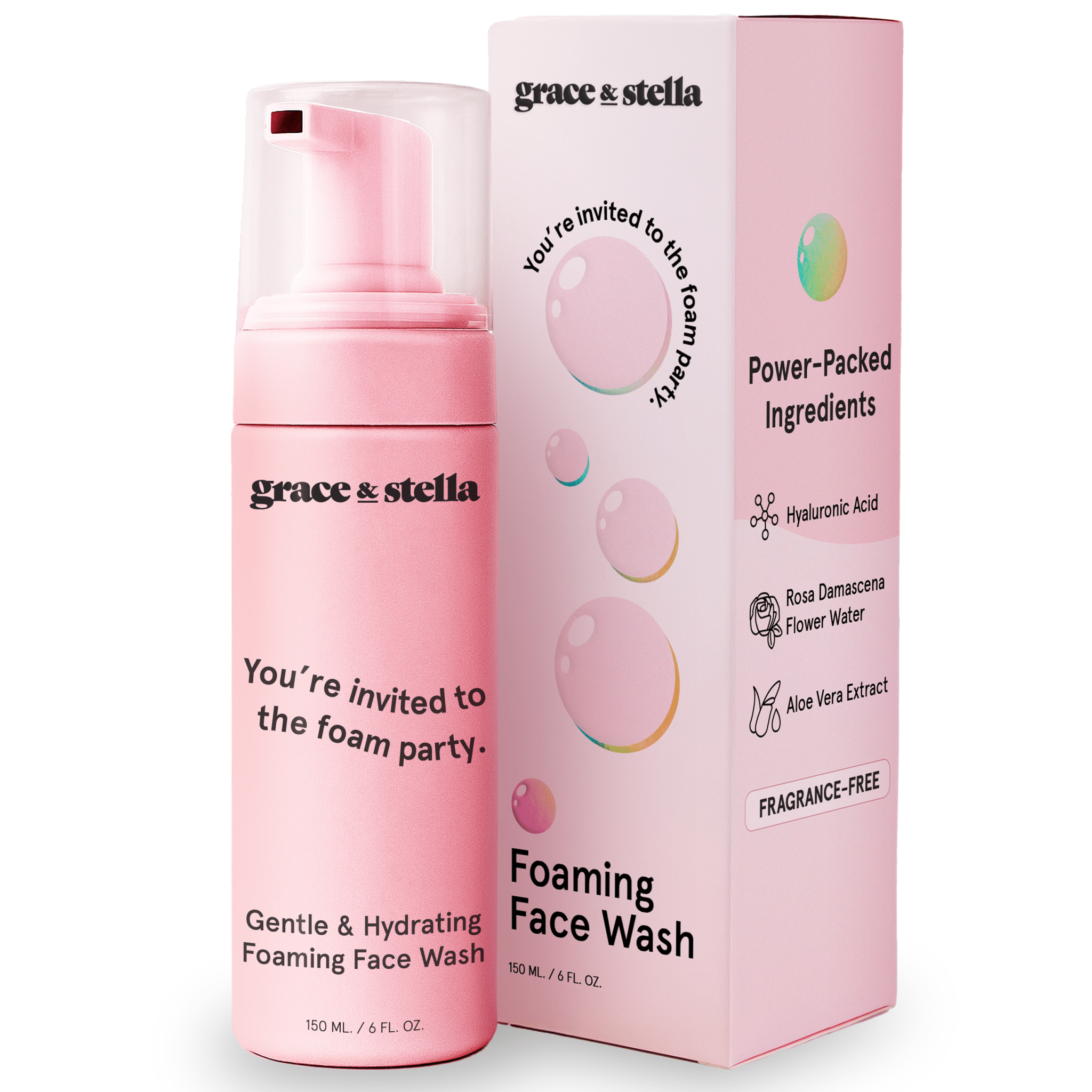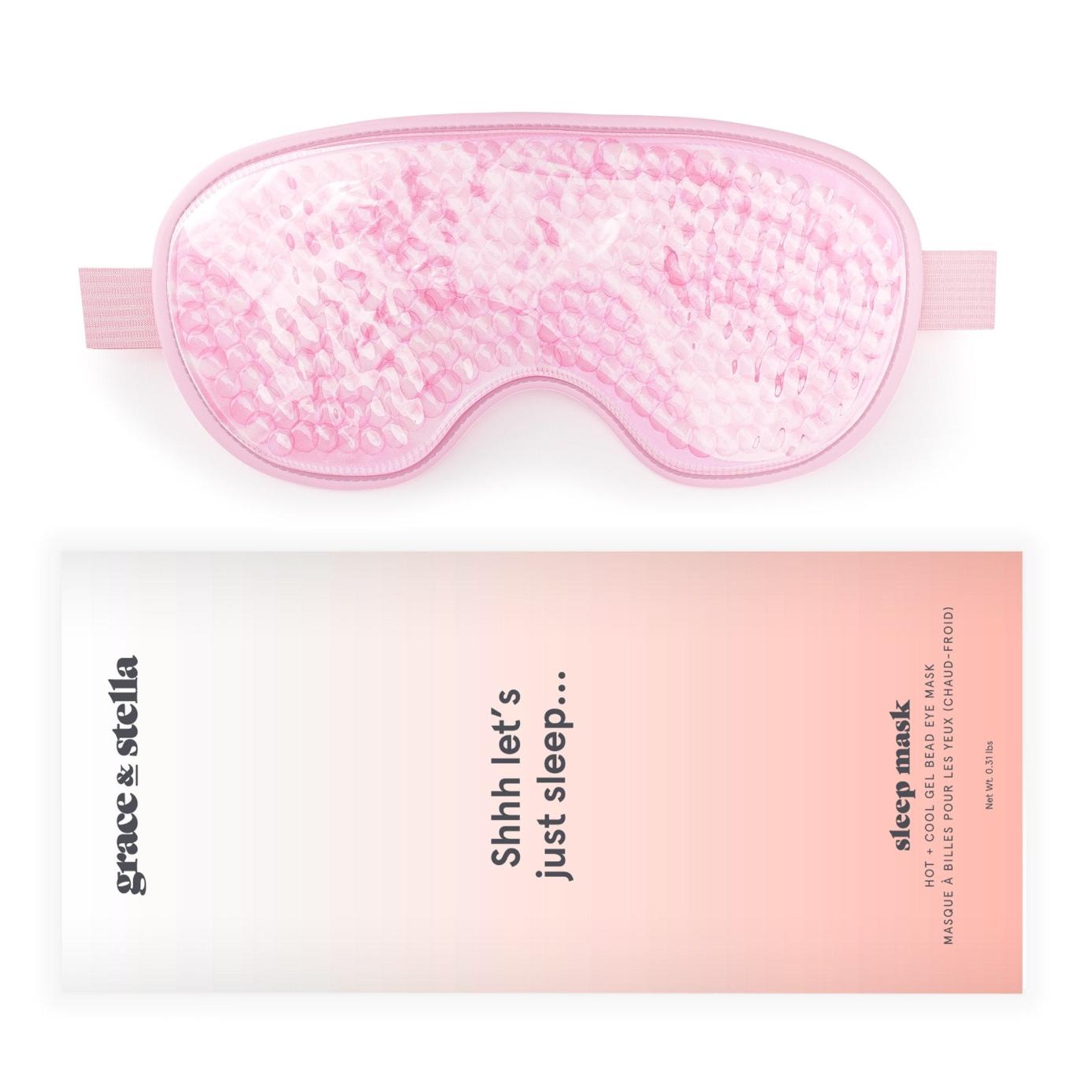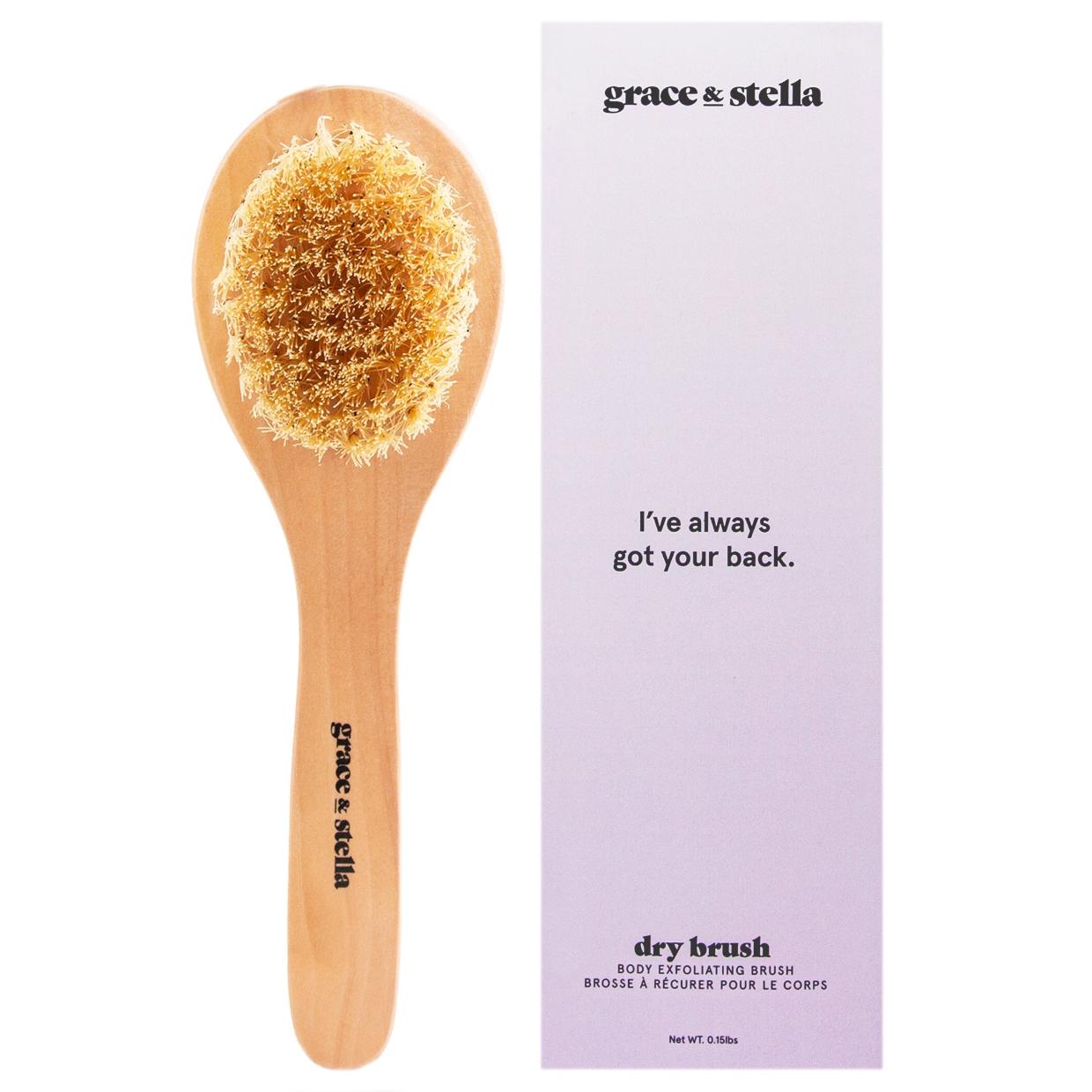Have you ever slathered on a DIY remedy or skipped a crucial skincare step because “everyone” swears by it? You’re not alone. In the quest for clear, glowing skin, many of us fall for popular skincare myths – only to end up with breakouts, irritation, or zero results. It’s time to set the record straight. In this post, we’ll debunk 10 common skincare misconceptions that might be hurting your skin. Get ready for friendly, science-backed advice (with a dash of grace & stella’s playful touch) to help you love the skin you’re in, the right way.
Myth #1: Natural Ingredients Are Always Better
The myth: “If it’s natural, it must be safer and more effective for your skin.” From kitchen concoctions to clean beauty fads, the word “natural” gets thrown around like it’s a magic guarantee. The reality: Natural isn’t automatically better or gentler. Poison ivy is natural – and you wouldn’t want that on your face! In truth, some natural ingredients can trigger allergies or irritation. For example, essential oils and even lemon juice (a common DIY “brightener”) can be harsh and sensitizing on skin. On the other hand, lab-made (synthetic) ingredients are often formulated for stability and safety; many, like hyaluronic acid or retinol, have been researched and proven effective. The key is to look at what works and what your skin tolerates, not just whether an ingredient grew from the ground. Your best bet: Patch test new products and focus on those with evidence-backed ingredients – whether they’re derived from nature or the lab.
Myth #2: Sunscreen Is Only Necessary on Sunny Days
The myth: “You can skip sunscreen when it’s cloudy or if you’re indoors.” It feels intuitive – no sun, no sunburn, right? The reality: Ultraviolet rays are sneaky. The American Academy of Dermatology (AAD) notes that even on overcast days, up to 80% of the sun’s UV radiation can penetrate clouds. Not only that, but UVA rays (the aging rays) can even pass through window glass and reach your skin. That means your skin is being exposed to damaging UV light even when you don’t see the sun. Over time, this hidden exposure contributes to premature aging (think wrinkles and dark spots) and increases skin cancer risk. Actionable advice: Make sunscreen a daily habit, rain or shine. Choose a broad-spectrum sunscreen (SPF 30 or higher) and apply it every morning as the last step in your routine. Don’t forget areas like your neck and hands. And if you do step outside, reapply at least every two hours (more often if you’re sweating or swimming). Your future self will thank you for the healthy, youthful skin! (P.S. Your makeup’s token SPF isn’t enough on its own – a dedicated sunscreen is a must.)
Myth #3: Oily Skin Doesn’t Need Moisturizer
The myth: “My face is already oily – adding moisturizer will make me break out or look greasier.” Many with oily or acne-prone skin fear moisturizer like the plague. The reality: Even oily skin can get dehydrated. In fact, skipping moisturizer can backfire. When you strip away moisture, your skin might produce more oil to compensate, leading to an even slicker complexion. The right moisturizer actually helps balance your skin. The trick is to use a lightweight, non-comedogenic (won’t clog pores) formula. Ingredients like glycerin or hyaluronic acid provide hydration without heaviness, and a bit of niacinamide can even help regulate oil production. So don’t be afraid to moisturize – even oily skin needs a drink of water (just oil-free water-based lotions in this case). Keeping your skin properly hydrated can calm excess oiliness and keep your barrier happy. Pro tip: Gel creams or fluid moisturizers work great for oily skin types, giving you a dewy not greasy glow.
Myth #4: Tanning Clears Up Acne
The myth: “A little sun or a tanning bed will dry out pimples and camouflage those blemishes – good as acne treatment.” The reality: While a tan might temporarily mask redness, it’s only an illusion of clearer skin. In reality, UV exposure can inflame your skin and trigger more breakouts once the tan fades. Even worse, tanning (whether from the sun or a bed) is extremely damaging: it dries out your skin, leads to premature aging (hello, wrinkles and sun spots), and raises your risk of skin cancer. Dermatologists universally agree – there is no such thing as a “safe tan.” Every time you intentionally tan, you’re harming your skin. Instead of chasing a short-term fix that does long-term damage, focus on proven acne treatments: gentle cleansers, salicylic acid or benzoyl peroxide spot treatments, non-comedogenic moisturizers, and sunscreen every day (yes, sunscreen again – it helps prevent the dark marks acne can leave). If you love the bronzed look, opt for a self-tanning product and keep using your SPF. Your skin will be clearer and healthier for it.
Myth #5: The Higher the SPF, the Better the Protection
The myth: “SPF 100? Bring it on – I won’t ever burn and I don’t need to reapply!” We’ve been conditioned to think that if SPF 30 is good, SPF 100 must be superhero-level. The reality: High SPF sunscreens do offer slightly more protection, but it’s not a huge jump – and it can give a false sense of security. SPF (Sun Protection Factor) mainly measures UVB protection (the burn rays). SPF 30 blocks ~97% of UVB, while SPF 50 blocks ~98%. Beyond that, the increase in protection is minuscule. No sunscreen blocks 100% of UV rays. The danger of relying on ultra-high SPF is that people often don’t apply enough or forget to reapply, thinking they’re invincible. In practice, an SPF 50 applied generously and reapplied diligently will protect you better than an SPF 100 applied sparingly once in the morning. Actionable advice: Stick to SPF 30 to 50 for daily use, and focus on applying it properly (about a shot-glass amount for your body, and a nickel-sized dollop for your face) and reapplying every two hours when outdoors. Also, ensure your sunscreen is broad-spectrum (guards against UVA and UVB). In short, use a high-enough SPF, apply plenty, and reapply often. That’s the winning combo for sun-safe skin.
Myth #6: Expensive Skincare Products Are More Effective
The myth: “Pricey luxury creams work better – you get what you pay for in skincare.” It’s easy to assume a $200 serum must be formulated with unicorn tears and miracles. The reality: Effective skincare isn’t about the price tag – it’s about the ingredients and formulation. Plenty of affordable, drugstore brands and indie brands use high-quality, science-backed ingredients that deliver results. Meanwhile, some luxury products charge more for fancy packaging or fragrance, not necessarily better results. Studies and dermatologists have noted that price doesn’t always equate to efficacy. What matters is what’s inside the bottle: retinol, vitamin C, niacinamide, hyaluronic acid, peptides – these proven actives can be found in products at all price points. For instance, you don’t have to break the bank to get a great eye treatment. grace & stella’s brightening eye stick is packed with caffeine, niacinamide, and peptides to depuff and brighten – all at a friendly price point, and of course it’s vegan and cruelty-free. The takeaway: do your ingredient homework and choose products that suit your skin’s needs. Your skin can thrive with a mix of high-low products. As we like to say, brighten your day with grace & stella by focusing on what works, not what costs the most.
Myth #7: Scrubbing Harder Gives Better Results
The myth: “If I really scrub and feel the burn, my skin will be cleaner, smoother, better!” This misconception has people attacking their face with gritty scrubs or rough washcloths, chasing that ultra-clean feeling. The reality: Over-exfoliating or scrubbing too hard does more harm than good. Your skin isn’t a dirty pan to scour – it’s a delicate organ. Vigorous scrubbing can strip away your skin’s protective barrier, leading to irritation, redness, sensitivity, and even more breakouts. Those harsh grainy exfoliants can create micro-tears in the skin, especially if used daily. Ouch! The goal of exfoliation is to gently remove dead cells, not sand your face raw. Actionable advice: Be kind to your skin with gentler methods:
-
Choose chemical exfoliation 2-3 times a week: Swap the harsh scrubs for a chemical exfoliant (like an AHA glycolic acid or BHA salicylic acid toner). These dissolve dead cells without scrubbing, leaving skin smooth and clear with far less irritation.
-
Avoid aggressive tools: Ditch overly abrasive pads or brushes. If you use a cleansing brush or face cloth, use light pressure or limit use. Your face shouldn’t turn tomato-red after washing – that’s a sign of irritation.
-
Moisturize and protect: Always follow exfoliation with a soothing moisturizer to replenish the skin barrier, and wear sunscreen. Freshly exfoliated skin is more susceptible to sun damage, so protection is key.
By exfoliating wisely, you’ll get the glow without the damage. Your complexion will actually improve – no angry, over-scrubbed skin insight.
Myth #8: Drinking Water Is Enough to Hydrate Your Skin
The myth: “If I chug tons of water, my skin will be super hydrated and dewy. I can skip moisturizer.” We often hear that good skin comes from within, so just drink more water. The reality: Staying hydrated internally is important for overall health, but it’s not a magic cure for dry skin. Once you’re adequately hydrated, extra water doesn’t automatically go straight to moisturizing your face. Many studies have found that drinking excess water has minimal impact on skin hydration for already-hydrated individuals. Skin hydration is more about retaining moisture in the skin’s outer layer (epidermis) – which means a healthy skin barrier and using topical hydrators. If your skin is dry, no amount of drinking water alone will fix flakiness; you need to treat it from the outside, too. Actionable advice: Keep drinking your 8 glasses a day, but for plump, moisturized skin, build good topical habits:
-
Use humectants and moisturizers: Apply products with ingredients like hyaluronic acid or glycerin that bind water in the skin. Immediately after cleansing (or showering), seal in moisture with a facial cream or serum – this helps lock hydration into your skin’s outer layers.
-
Avoid moisture-zappers: Long, steamy showers might feel great, but hot water can strip natural oils and dry you out. Stick to lukewarm water, and limit showers to 5-10 minutes. Harsh soaps or high-alcohol toners can also dehydrate skin, so opt for gentle, alcohol-free products.
-
Add environmental help: If you live in a dry climate or spend winter days in heated rooms, consider using a humidifier. A little extra humidity in the air can prevent your skin from drying out. And always protect your skin with a moisturizer and, during the day, with sunscreen (yes, sunscreen again – it prevents UV from sucking the moisture and life out of your skin).
By combining internal hydration (drink that water!) with external hydration (good skincare), you’ll tackle dryness from both sides. Glowing, supple skin, here you come.
Myth #9: You Can Shrink Your Pores (or “Open/Close” Them)
The myth: “Pores open with hot water and can be closed with cold, or you can shrink them permanently with the right product.” It’s a tempting idea – who wouldn’t want porcelain-smooth skin? The reality: Pore size is largely genetic. You can minimize their appearance, but you can’t physically shrink or “close” pores for good. Those splash-of-cold-water tricks might temporarily make pores feel tighter, but they don’t alter their actual structure. Similarly, no topical clay mask or toner can magically erase pores – be wary of products that claim to do that. That said, pores often look larger when they’re clogged or your skin is lax, so there are ways to make them less noticeable. Actionable advice: Focus on keeping pores clear and skin firm. Regularly using a BHA (salicylic acid) can dive into pores and clear out oil and dead skin, helping pores appear smaller. Retinoids are another gold-standard – they boost cell turnover and can increase collagen, which may make pores look tighter over time. And yes, gentle exfoliation (see myth #7) helps too. Just remember to be consistent and patient. Also, protect your skin from the sun – UV damage breaks down collagen, which can make pores stretch more. So while you can’t trade in your pores for invisible ones, you can keep them clean and less pronounced. Embrace your skin’s texture; it’s totally normal to have visible pores, and only Photoshop can make them vanish completely!
Myth #10: Toothpaste Gets Rid of Pimples
The myth: “Dab a little toothpaste on your zit and it’ll dry it right up overnight.” This old-school trick has been passed around at sleepovers for generations. The reality: Yes, toothpaste may dry out a pimple a bit because it contains ingredients like baking soda, hydrogen peroxide, or alcohol. But it’s way too harsh for your skin. Toothpaste is formulated for hard enamel, not delicate facial skin. Putting it on a breakout often causes irritation, redness, peeling, and can disrupt your skin barrier – essentially making the situation worse. You might end up with a flaky, irritated spot that’s harder to conceal than the original pimple! Actionable advice: Ditch the toothpaste and treat pimples with proper skincare:
-
Spot treat with acne fighters: Use an over-the-counter spot treatment containing benzoyl peroxide or salicylic acid. These ingredients are proven to fight acne bacteria and unclog pores, and they’re formulated in concentrations meant for facial skin (unlike that minty toothpaste burn).
-
Try a pimple patch: Those little sticker patches (hydrocolloid patches) can work wonders. They protect the blemish from bacteria and picking, and often reduce inflammation overnight. Plus, you get the oddly satisfying bonus of seeing what the patch pulls out.
-
Hands off and hydrate: As tempting as it is, avoid poking or squeezing pimples – that can push bacteria deeper and cause scarring. Keep the area clean, moisturized, and let the pimple run its course with a bit of help from the right product. If you suffer frequent breakouts, consider consulting a dermatologist for personalized treatment beyond the home remedies.
By treating acne gently and effectively, you’ll heal breakouts faster and with less collateral damage. Your skin will thank you (and you can save the toothpaste for your teeth).
Conclusion
Misconceptions in skincare are as common as selfies these days, but now you’ve got the facts to take better care of your skin. By debunking these myths, you can swap out ineffective or harmful habits for evidence-based practices that really work. The result? Happier, healthier skin that glows from within. Remember, great skincare doesn’t have to be complicated or crazy expensive – it just needs to be consistent and kind to your skin. grace & stella is built on this philosophy, believing in clean, cruelty-free products that actually deliver (no snake oil or wild claims here!). So next time you hear a too-good-to-be-true beauty tip, think back to these myth-busters and stick to what science (and your skin) loves. Brighter days are ahead for your complexion – and we’re here cheering you on every step of the way. Ready to give your under-eyes some myth-busting TLC? Brighten your day with grace & stella and treat your skin with the gentle care it deserves. Shop the brightening under-eye patches and let your eyes do the smiling!



